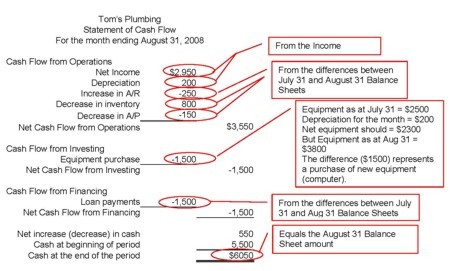Understanding a Bank s Balance Sheet (BAC)
Post on: 11 Июнь, 2015 No Comment

Banks have a much different business model from most companies. As financial institutions, banks produce no goods and therefore don’t have inventory. Yet what you will find on the balance sheet is essential to understanding the financial health of a bank. Let’s take a look at the items that you can usually expect to see on a bank’s balance sheet, with the goal of helping you analyze banks that appear on your investing watchlist.
Understanding a bank’s assets
The hardest challenge in understanding a bank’s balance sheet is that from the bank’s perspective, what’s an asset and what’s a liability are the reverse of what you’d probably expect. For instance, from the customer’s viewpoint, it’s easy to think that a bank’s biggest asset is the money that it holds for depositors. Yet banks actually work hard to get rid of most of that money as soon as it comes in, putting it to work in more profitable ways that can generate a return.
The most important asset at most banks are the loans it makes to its customers. The reason loans are an asset is that the bank expects repayment of the loan at a future date, and in the meantime, it can often buy or sell loans between other banks if it needs liquidity. At Bank of America ( NYSE: BAC ). for instance, loans make up more than 40% of total assets.
In addition to loans, banks also invest in various types of securities. Government bonds are a popular choice among most banks, but you can also find mortgage-backed securities and other assets in the bank’s trading accounts. Currently, total investments make up about 30% of Bank of America’s overall assets.
Finally, banks hold some liquid cash, and you’ll often find other sorts of assets, such as real estate that the bank owns both for its operations and from foreclosing on bad loans, goodwill and other intangible assets, and items like deferred tax assets that have value from an accounting standpoint. B of A has about 15% of its assets in cash currently, with other assets making up the remainder of the bank’s assets.
Usually, loans are the most profitable use of a bank’s money, with returns that generally exceed what it can earn on investment securities. Yet extending loans to the right customers is essential to a bank’s success, as repayment risk plays the most important role in whether a loan is good or bad. That’s the tension that drives lending policies at big financial institutions.
Balancing bank liabilities
Interesting, many investors find the liability side of a bank’s balance sheet easier to understand. That’s because you’ll find most of the products with which bank customers are familiar there.
The biggest portion of a bank’s liabilities comes from deposit accounts. At Bank of America, deposits make up about 60% of its overall liabilities, with the majority of those deposits in accounts that pay interest to their accountholders. Yet it’s important to understand that all interest-bearing deposits end up in the same broad category on the balance sheet, that doesn’t tell you how much interest they pay — for that, you have to go to the income statement.
Other than deposits, banks can also borrow money from other sources. The Federal Reserve makes overnight and short-term loans available to many banks, and banks can also issue longer-term debt to investors.
Finally, banks have expenses on their balance sheets that they’ve accrued but not yet paid. At big banks, this item is relatively small, with Bank of America’s accrued expenses amounting to less than 8% of total liabilities.
What to watch for
In assessing the health of a bank’s balance sheet, several things stand out. Ideally, the greater the percentage of deposits as liabilities, the more profitable a bank is likely to be. At the same time, you should also look at shareholder equity — the difference between assets and liabilities — as a sign of how much leverage a bank has in its portfolio of loans. The greater the ratio of assets to equity, the greater the risk if the bank’s loans go awry.
Bank of America + Apple? This device makes it possible.
Apple recently recruited a secret-development dream team to guarantee that its newest smart device was kept hidden from the public for as long as possible. But the secret is out. and some early viewers are claiming that it’s destined to change everything from banking to health care. In fact, ABI Research predicts that 485 million of this type of device will be sold per year. But one small company makes Apple’s gadget possible. And its stock price has nearly unlimited room to run for early in-the-know investors. To be one of them, and see Apple’s newest smart gizmo, just click here !














